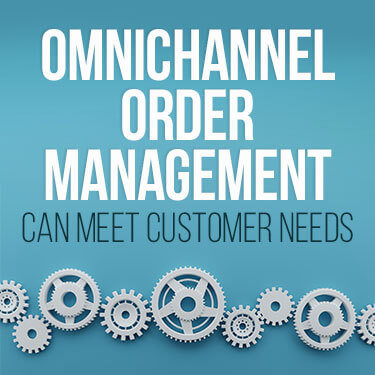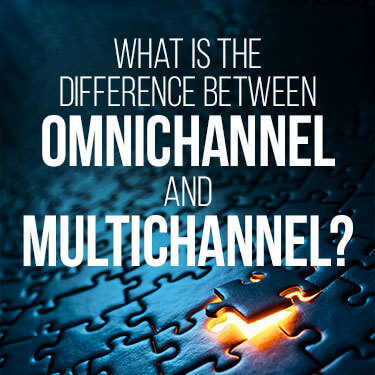
 Copy URL to Clipboard
Copy URL to Clipboard
Omnichannel order management is the new way to keep up with ever-changing consumer and business needs. Customer expectations for product variety, user services, and delivery expectations are on the rise. Meeting those needs is crucial for thriving in today’s evolving retail and e-commerce markets.
Omnichannel order management unites all sales channels into one seamless experience for consumers. Companies using omnichannel strategies have an order management system (OMS) across eCommerce platforms, brick-and-mortar stores, and social media sites. Proper system integration and multi-level marketing are key to success.
Learn more about omnichannel retail and how it's affecting modern-day commerce strategy.
Table of Contents
Omnichannel shopping (also called omnichannel commerce) is the next evolution in product sales. It’s driven in part by meeting new consumer needs during the Covid-19 pandemic. Omnichannel refers to using the same order management system across different sales channels.
A better customer experience is possible when it's all in one place. Viewing, ordering, and tracking purchases through any of the company’s platforms saves time and resources.
Omnichannel order management is useful in B2C or B2B commerce to streamline customer services. Clients can browse products online or in stores. They can make purchases through social media platforms and even track shipments through a mobile device app.
A good omnichannel layout will make any combination of those services possible. It places a customer’s history all in one place regardless of platform.

The term ‘channel’ describes the different ways products get bought or sold. Omnichannel and multichannel retail are both ways companies can use more than one sales channel. The differences have to do with how each channel operates with others.
Commerce industries categorize channel strategies in three different ways:
Each channel strategy has its pros and cons. A business needs to think about its target market and actual capabilities when considering its channel strategy.

An order management system (OMS) is any system used to track the orders of company products. An OMS used by a company offering omnichannel services has to handle different order channels, track inventory, and manage client requests.
The information that needs to be stored within an OMS includes:
The two T’s that customers look for most are Time and Transparency. When choosing an OMS for your company, you need to consider how well met those needs are. Will customers be able to see their orders processed in real time? Is the pricing for products and services transparent?
Consider all the different steps processed by an OMS:
For businesses operating brick-and-mortar stores alongside eCommerce platforms, order management solutions need to be both adaptable and accurate. A static, overly structured system, like ERPs, makes it difficult to keep up with real-time ordering and complex fulfillment options. ERPs also have limited abilities to manage multiple channels.
This doesn’t mean that your company needs to completely scrap its ERP. In fact, that would be a bad idea. ERPs often include solutions for HR, accounting, and manufacturing. Businesses can continue to use them as a financial system of record.
An OMS may be added to an existing ERP to handle records of order data. An OMS is more customer focused and makes keeping up with changing trends easier.

To really get a handle on trends, you have to track a customer’s journey when making a purchase. As mentioned before, OMS is more customer focused. In today’s consumer driven market, that focus can help your business increase its profits and keep customers happy.
An effective omnichannel OMS allows your employees to work smarter. Services like order routing used to be handled manually. With an OMS, finding the best shipping routes and times is automated. A less manual process means that the same employee can focus more on activities that increase revenue - like being on the sales floor and speaking with customers.
An omnichannel system that offers ship-from-store options also saves on labor. In-store employees can handle local orders with more ease. The same is true for in-store pickup or curbside pickup offers. These in-store fulfillment options take some of the load off warehouse employees.
The efficiency of an automated system is a big part of keeping shipping costs down. An A.I. that keeps track of metrics like customer location, inventory levels, and shipping routes makes it easier to offer cost effective options. This transparency helps you as a retailer and keeps customers satisfied.
Turning stores into distribution centers for online purchases might also decrease your shipping costs. If your brick-and-mortar store is closer to the customer, shipping it from that location might be less expensive than sending it from a centralized warehouse. Chances are it will also get to their door faster.
You may even be able to bypass the shipping process altogether for customers who prefer to pick up at the store. Shopping online no longer means having to rely on delivery.
If you want to offer free shipping as an incentive, keeping costs down is a major step.
Customer retention is good for business. Attracting new customers will cost you at least five times more than keeping existing ones. At the same time, loyal customers generate more revenue because they tend to purchase more over time.
Faster delivery times make for happier customers. Easy options for necessary returns create a more confident shopper. Having real people available to help when needed makes clients feel valued. Whether you are targeting individuals or the B2B market, holding on to clients improves the odds of long-term success.
Omnichannel services don’t look the same for every business. A DNVB that only exists on the web will have different channels than a big box store operating nationwide. Both types of companies, and all the options in between, can still offer a variety of omnichannel services.
Different ways customers may browse, get advice, or make purchases include:
Some of the above options, like phone or video chat, require real people to engage with clients. Even in an increasingly digital world, research shows hearing a voice on the other end of a line is still a big part of customer satisfaction.
The logistics of providing any of the above channels will depend on which ones you choose to offer. Determining which ones will best benefit your business may involve a bit of trial and error.
The best omnichannel marketing strategies will focus on the customer rather than on brand promotion. With the way that omnichannel is structured, it's not as crazy as it sounds.
Multichannel services, mentioned earlier, put brands first. Doing so makes it harder to create personalized options because they aren’t tracking the customer journey. You might flood a potential client's email with offers not realizing they already made a purchase. Oversaturation just creates annoyance, not loyalty.
When focusing on customer experiences, work to personalize their interactions based on needs and habits. How do you start?
No single marketing strategy is going to cover all channels used by customers. Staying on top of client data and keeping up with the latest buying trends is an ongoing process. Choosing a marketing strategy for your omnichannel services will also depend on how you want your brand to be seen.
Once you have your omnichannel OMS in place, make sure you can keep up with customer demands. R+L Global Logistics can be your partner in distribution and order fulfillment across different sales channels.
When it comes to personalizing deliveries for your clients, we offer Pick and Pack fulfillment and kitting services. Our warehouse fulfillment services will help you organize and track your inventory to meet your business needs.
Get a service quote now and R+L Global Logistics can become your partner for building a successful future.
